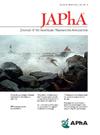Implementation and evaluation of a pharmacist-led glucagon-like peptide-1 receptor agonist titration service in two primary care clinics
IF 2.5
4区 医学
Q3 PHARMACOLOGY & PHARMACY
Journal of the American Pharmacists Association
Pub Date : 2025-05-01
DOI:10.1016/j.japh.2025.102385
引用次数: 0
Abstract
Background
People with type 2 diabetes are increasingly prescribed glucagon-like peptide-1 receptor agonists (GLP-1 RAs) which require frequent follow-up for tolerability and dose optimization. To prevent clinical inertia, ambulatory care pharmacists are well-positioned to provide titration services to reduce prescriber burden.
Objectives
The objective of this study was to describe the implementation and evaluation of a pharmacist-led GLP-1 RA titration service.
Practice description
The 2 clinics included in this study are part of a community-based health system serving northern Illinois.
Practice innovation
Included clinics are staffed by an ambulatory care pharmacist working under a delegation protocol. Initial encounters address medication accessibility and education. Follow-up visits evaluate tolerability, blood glucose control, and dose optimization.
Evaluation methods
The primary endpoint was the absolute change in hemoglobin A1c (HbA1c) from baseline to 3-6 months post-titration. Paired t-tests were used for statistical comparisons.
Results
From September 2022 to May 2023, 120 patients met inclusion criteria; 8 patients stopped therapy. Mean baseline HbA1c was reduced by −1.8% (P < 0.001) at 3-6 months post-titration. Average change in weight was −8.1 kg (N = 107) (P < 0.001). The number of diabetic medications decreased from an average of 2.5 to 2.1 medications. The percentage of patients meeting Healthcare Effectiveness Data and Information Set measures for diabetes after pharmacist intervention were 97.3% for blood pressure under 140/90 mm Hg, 95.5% for HbA1c under 8%, 100% for serum creatinine tested in last 12 months, and 90.2% for urine microalbumin/creatine ratio tested in last 12 months. The average patient required 6.5 encounters and 91 total pharmacist minutes to achieve GLP-1 RA optimization. Approximately 0.1 full-time equivalents of pharmacist coverage were required over 13 months to manage 120 patients.
Conclusions
Ambulatory care pharmacists can effectively optimize GLP-1 RAs to improve clinical outcomes, meet quality-based metrics, and reduce prescriber burden.
药师主导的胰高血糖素样肽-1受体激动剂滴定服务在两个初级保健诊所的实施和评价。
背景:2型糖尿病患者越来越多地使用胰高血糖素样肽-1受体激动剂(GLP-1 RAs),这需要经常随访以确定耐受性和剂量优化。为了防止临床惰性,门诊药剂师可以提供滴定服务,以减轻处方者的负担。目的:本研究的目的是描述药剂师主导的GLP-1 RA滴定服务的实施和评估。实践描述:本研究中包括的两个诊所是服务于伊利诺伊州北部的社区卫生系统的一部分。实践创新:纳入的诊所由一名在授权协议下工作的门诊护理药剂师组成。最初的接触涉及药物可及性和教育。随访评估耐受性、血糖控制和剂量优化。评价方法:主要终点是血红蛋白A1c (A1c)从基线到滴定后3-6个月的绝对变化。采用配对t检验进行统计学比较。结果:2022年9月至2023年5月,120例患者符合纳入标准;8例患者停止治疗。平均基线A1c降低了-1.8%(结论:门诊药师可以有效地优化GLP-1 RAs,以改善临床结果,满足基于质量的指标,并减轻处方者负担。
本文章由计算机程序翻译,如有差异,请以英文原文为准。
求助全文
约1分钟内获得全文
求助全文
来源期刊
CiteScore
3.30
自引率
14.30%
发文量
336
审稿时长
46 days
期刊介绍:
The Journal of the American Pharmacists Association is the official peer-reviewed journal of the American Pharmacists Association (APhA), providing information on pharmaceutical care, drug therapy, diseases and other health issues, trends in pharmacy practice and therapeutics, informed opinion, and original research. JAPhA publishes original research, reviews, experiences, and opinion articles that link science to contemporary pharmacy practice to improve patient care.

 求助内容:
求助内容: 应助结果提醒方式:
应助结果提醒方式:


